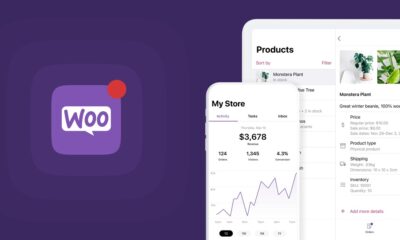Technology
15 Powerful Mobile Optimization Tips for Your Website


The use of mobile devices, such as smartphones and tablets, to access the internet is rapidly growing as we delve deeper into the digital era. It’s pretty apparent that mobile devices now generate more than half of all website visits, which makes it necessary for companies to develop apps that work across a wide range of mobile platforms. The success of your mobile app development, user engagement, and conversion rates all depend on its ability to run smoothly across a variety of mobile devices.
Mobile users are five times more likely to abandon a site if it isn’t mobile-friendly. More than half of all internet traffic now derives from mobile devices. In fact, 57% of customers say they wouldn’t suggest a company if they had a bad mobile site. After a poor mobile experience, 40% of users will abandon your site for a rival company.
When compared to sites that take 19 seconds or more to load on mobile devices, those that load in under 5 seconds have a 25% greater ad viewability and a 70% longer session duration. Hence, it’s obvious how important it is to optimize your mobile app for different devices in order to accelerate your business growth and generate sales. In this article, we’ll go over 15 effective strategies for mobile optimization that will boost user engagement and result in better outcomes for your website.
15 Powerful Mobile Optimization Tips for Your Website


1. Ensure Consistency Across Desktop and Mobile Platforms
Consistency in content between both the desktop and mobile versions of your site is crucial. The same data and features should be available to users on both systems. Using responsive design strategies and maintaining a consistent navigation and site structure across devices will enable you to achieve this goal.
2. Don’t Neglect Above-the-Fold Content
The rise of mobile devices has changed the definition of “above-the-fold” content, but it’s still crucial to put the most relevant details and calls to action up top. Make sure that, when viewing on a mobile device, the user does not need to scroll unnecessarily in order to access relevant information.
3. Adopt a Top-Down Development Model
Using a top-down approach to app creation means starting with the most basic features and working up to more advanced ones as your target device’s capabilities increase. By taking this measure, you can rest assured that your software will function properly on all devices and avoid frustrating consumers who are stuck with older or less capable gadgets.
4. Support Both Desktop and Mobile Viewers
Even while optimizing your webpage for mobile devices is essential, you can’t forget about your desktop audience. Make sure your website looks good and works well on mobile as well as desktop devices and think about implementing responsive design to create a consistent user experience.
5. Use Mobile-Friendly and Responsive Design
When optimizing your website for mobile devices, responsive design is essential. The user’s viewing experience will be greatly improved as your site responds automatically to the size and orientation of the user’s device. To make a layout that adapts to different screen sizes, use CSS media queries and fluid grids. Elevate your online content effortlessly using the Adobe Express Chrome Extension. This streamlined tool brings the full power of Adobe’s creative suite to your Chrome browser with ease.
6. Choose Code Over Images for Faster Site Speed
When possible, replace images with code to speed up your site. Use Scalable Vector Graphics (SVG) files in place of raster images for things like icons and illustrations. This method can make pages load much faster and improve the user experience.
7. Enhance WordPress’s Mobile Experience
Choose WordPress themes and plugins that are optimized for mobile viewing. To further improve site speed and decrease server load, you should consider utilizing caching plugins and content delivery networks (CDNs).
8. Avoid Intrusive Banner Ads & Pop-Ups
The user experience on mobile devices can be negatively impacted by interstitial advertisements, pop-ups, and overlays. If you want to increase engagement and decrease bounce rates, avoid employing these features to market your products and services.
9. Robust Cross-Platform Testing
Doing extensive testing on numerous platforms is essential to optimize your mobile app for different devices. In this way, your app’s performance won’t be affected by factors like screen size, OS, browser, etc. To find and fix browser compatibility issues, you can use tools like the Google Web Developer Chrome Extension, BrowserStack, and Cross Browser Testing. By putting your app through these trials on many platforms, you’ll be able to show that you’re dedicated to creating an accessible and welcoming digital environment for all users.
10. Follow Industry Standards for Mobile Video SEO
Video content that is optimized for mobile devices can increase engagement and boost search engine rankings. Create a div root element, a video media element, and a div child element just for video controls to adopt mobile video SEO best practices and accomplish this goal. Play/pause and skip forward/backward controls, as well as other user-friendly functions, should be included. Follow a methodical approach, utilize a video sitemap, and make sure your videos can be indexed to guarantee a full technical adoption of mobile video. You can further optimize your video material for mobile devices by using Google-supported thumbnail formats and easily-identifiable HTML tags.
11. Use Structured Data from Schema.org
Adding Schema.org structured data to your mobile app’s content can increase its discoverability and improve how search engines interpret it. Click-through rates and organic traffic to your site may rise due to the addition of rich snippets appearing in search results.
12. Don’t Block Supporting Scripts
Ensure that your website doesn’t block supporting scripts like JavaScript, CSS, or images, as this can negatively impact the user experience and your site’s search engine rankings. Make sure that users and search engine robots can easily access all of the site’s main features.
13. Focus on Picture Optimization to Boost Efficiency
Improving a mobile app’s performance relies heavily on optimizing its pictures. Use relative image sizes that adapt to the device’s screen size and choose inline pictures that are integrated within the HTML or CSS code to guarantee your photos are optimized. Use the srcset attribute for images on high-DPI devices, which lets browsers pick the best image source automatically. Expandable product photos are a great way to enhance the user experience and boost conversions for an e-commerce site that prioritizes search engine optimization.
14. Optimizing Performance by Reducing Page Sizes
If you want your website to run better on mobile devices, you should reduce the page size. It may be helpful to avoid using any custom fonts if they aren’t absolutely necessary. Reduce the quantity of resources used by the Document Object Model (DOM) and the essential processing path and optimize your images by compressing them without compromising quality. This can be done by reducing the number of CSS and JavaScript files on your site and using only the absolutely necessary ones. Minimize the size of your HTML, CSS, and JavaScript files by getting rid of extra whitespace, comments, and characters. The result will be smaller files, quicker load times, and enhanced user experience.
15. Don’t spam people with ads and promotional links
Don’t bombard visitors with so many advertising and affiliate links that they can’t see the actual content. This can result in a bad user experience and higher bounce rates, both of which are bad for SEO.
Conclusion: How to Optimize Your Website for Mobile Devices
If you want to provide a smooth experience for your users, boost engagement, and increase productivity, you need to make sure your mobile app works well across a variety of mobile devices. You may make your website accessible to a wide range of users by applying the 15 effective mobile optimization tips described in this article.
Unfortunately, improving a mobile app’s performance isn’t always easy. Hiring expert web developers skilled in mobile optimization will help you get the optimum results. They can assist you in developing a top-notch app that people will love and that will boost your company’s user engagement.





 Technology2 months ago
Technology2 months agoWhy Adding Videos to WooCommerce Product Galleries is Essential in 2025



 General2 months ago
General2 months agoWhat Is Smart Construction? A Beginner’s Guide



 Technology1 month ago
Technology1 month agoHow to Send WooCommerce SMS Notifications for Orders



 Technology1 month ago
Technology1 month ago7 Essential TikTok Metrics to Track for Higher TikTok Views in 2025

 Model3 weeks ago
Model3 weeks agoTiffany Stratton: Biography, Wiki, Age, WWE Career, Net Worth, Before Fame, Boyfriend





 Technology4 weeks ago
Technology4 weeks agoTop 5 Tips for Using File Uploads in Your WooCommerce Store Efficiently

 Technology3 weeks ago
Technology3 weeks agoWhy Airlines Are Using Virtual Reality Services for Pilot Training



 General4 weeks ago
General4 weeks agoThe Hidden Costs of a DUI & How a Lawyer Can Help You Avoid Them




You must be logged in to post a comment Login